Overview of Hoanib Skeleton Coast Camp
Hoanib Skeleton Coast Camp offers a luxurious and secluded retreat nestled within Namibia’s stark yet stunning desert landscape. Located near the iconic Skeleton Coast, this camp provides guests with an authentic safari experience combined with comfort and elegance. Surrounded by rugged dunes, vibrant wildlife, and unique geological formations, it serves as the perfect base for exploring one of Africa’s most remote and intriguing regions.
Location and Accessibility
Hoanib Skeleton Coast Camp in Namibia offers a uniquely remote and luxurious safari experience in the heart of the Namib Desert. Nestled within the Hoanib River Valley, the camp provides stunning views of the surrounding wilderness and a chance to observe desert-adapted wildlife in their natural habitat. It is designed to blend seamlessly with the environment, providing guests with comfort amidst the rugged landscape.
The camp is located in the northwestern part of Namibia, within the Skeleton Coast National Park, an area renowned for its dramatic coastline, shipwrecks, and desert scenery. Its strategic placement allows guests to explore the diverse ecosystems, from dunes to riverbeds, while staying in a secluded setting.
Accessibility to Hoanib Skeleton Coast Camp is primarily by light aircraft, which can be arranged from Windhoek or nearby airstrips. The camp is reachable via a scenic flight that offers breathtaking aerial views of the desert and coast. Once on the ground, visitors typically transfer by 4×4 vehicle across rugged terrain to reach the camp, ensuring an adventure that complements the remote beauty of the region.
Camping and Accommodation Facilities
Hoanib Skeleton Coast Camp in Namibia offers a unique and luxurious experience amid the rugged beauty of the Skeleton Coast. Surrounded by incredible desert landscapes and untouched wilderness, it provides guests with an authentic adventure combined with comfort and style.
The camp features spacious tents that blend seamlessly into the environment, each equipped with modern amenities to ensure a comfortable stay. These accommodations often include en-suite bathrooms, private verandas, and cozy interiors, allowing guests to relax after exploring the surrounding dunes and desert scenery.
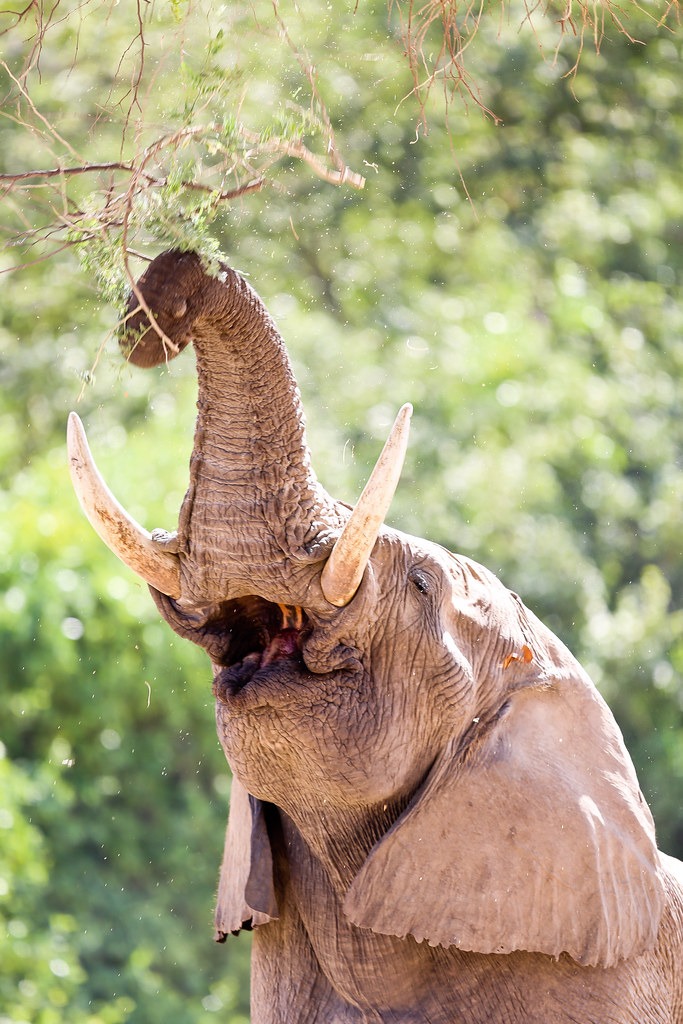
Camping facilities at Hoanib Skeleton Coast Camp are designed for both adventure lovers and those seeking luxury. Whether staying in contemporary tents or on guided safaris, visitors can enjoy the breathtaking views, birdwatching opportunities, and the chance to see desert-adapted wildlife such as elephants, lions, and cheetahs.
The camp emphasizes eco-friendly practices, ensuring that guests experience Namibia’s wilderness with minimal environmental impact. Overall, the accommodation facilities provide an exceptional blend of rustic charm and modern comfort, making it an ideal base for discovering the mysteriousSkeleton Coast and its remarkable landscapes.
Unique Features and Layout
Hoanib Skeleton Coast Camp in Namibia offers a luxurious and immersive experience amidst the rugged beauty of the Skeleton Coast. Nestled in a remote desert landscape, the camp provides guests with a unique opportunity to explore one of Africa’s most unspoiled wilderness areas while enjoying top-tier amenities.
Unique features of the camp include its sustainable design, blending seamlessly into the environment, and its emphasis on eco-friendly practices. The camp’s location near the Hoanib River allows visitors to witness remarkable desert-adapted wildlife, including elephants, lions, and giraffes, in their natural habitat. Additionally, the camp offers personalized excursions such as game drives, guided walks, and cultural experiences with local Himba communities.
The layout of Hoanib Skeleton Coast Camp is thoughtfully planned to maximize privacy and panoramic views. The tents are spacious, luxurious, and equipped with modern comforts, each positioned to provide unobstructed vistas of the surrounding desert and riverbed. Central communal areas, including a lounge, dining tent, and plunge pool, are designed to foster socializing and relaxation, all while maintaining harmony with the environment. Overall, the camp offers an exceptional blend of comfort, adventure, and ecological responsibility amid Namibia’s dramatic landscape.
Natural Environment and Surroundings
Nestled along the rugged and breathtaking shores of Namibia, the Hoanib Skeleton Coast Camp offers a unique opportunity to experience the natural environment and surroundings in their purest form. This remote and pristine landscape is characterized by vast deserts, towering dunes, and the rugged Atlantic coastline, creating a captivating setting that showcases the awe-inspiring beauty of nature. Surrounded by untouched wilderness, visitors can immerse themselves in the tranquility and raw power of the natural world. The area is home to diverse flora and fauna, offering a glimpse into the resilient life that thrives in this seemingly harsh environment.
Desert Landscape and Terrain
The Hoanib Skeleton Coast Camp in Namibia is set amidst a striking and rugged natural environment characterized by expansive desert landscapes and diverse terrain. Surrounded by the remote and pristine wilderness of the Skeleton Coast, the area features vast, arid plains interspersed with towering sand dunes that shift with the wind. The terrain includes rocky hills, gravel plains, and occasional riverbeds that come alive during rare rains, creating a dynamic and constantly changing environment. This dramatic landscape supports unique flora and fauna adapted to survive in extreme conditions, offering visitors a rare opportunity to experience the untouched beauty and silent majesty of Namibia’s desert wilderness.
Flora and Fauna of the Region
The Hoanib Skeleton Coast Camp in Namibia is situated in a remote and diverse natural environment characterized by stark landscapes and unique ecosystems. The region is part of the Namib Desert, one of the oldest deserts in the world, featuring vast sand dunes, gravel plains, and rugged coastlines along the Atlantic Ocean. The surrounding terrain creates a dramatic backdrop for wildlife and plant life adapted to arid conditions.
The flora of the area includes hardy desert plants such as succulents, saltbush, and acacia trees that thrive in the nutrient-poor soil and conserve water efficiently. These plants provide essential sustenance and shelter for various animals. The region’s flora plays a crucial role in stabilizing the fragile environment and supporting its unique fauna.
The fauna of the Hoanib Skeleton Coast encompasses a remarkable array of species specially adapted to survive in extreme desert and coastal conditions. Among the mammals, desert-adapted elephants, oryx, springboks, and rare black rhinos can sometimes be seen roaming the area. The coast and desert are also home to diverse bird species, including desert larks, and peregrine falcons. Marine life along the coast features seals, sea lions, and occasionally the elusive arctic-like creatures that come close to the shore. This exceptional biodiversity highlights the resilience and delicate balance of life in Namibia’s Skeleton Coast region.
Climate and Weather Conditions
Hoanib Skeleton Coast Camp in Namibia is situated in a remote and pristine natural environment, surrounded by vast desert landscapes and rugged coastal scenery. The camp offers visitors an immersive experience in one of Africa’s most untouched regions, where the land meets the Atlantic Ocean along the iconic Skeleton Coast. This area is characterized by its stark beauty, with towering dunes, gravel plains, and sparse vegetation that support unique wildlife adaptations.
The climate of the Hoanib Skeleton Coast region is classified as arid desert, with extremely low annual rainfall and high temperatures during the day, especially in summer. Winters tend to be cooler but still generally warm during the daytime, with cooler nights. The weather conditions create a challenging yet fascinating environment that supports specialized flora and fauna. Winds often sweep across the landscape, contributing to the ever-changing dune formations and shaping the coast’s dramatic scenery.
Weather in this area is typically dry, with clear skies dominating most of the year. Unpredictable fog can sometimes occur along the coast, providing much-needed moisture to the local ecosystem and creating a mysterious, misty atmosphere that adds to the allure of the region. The combination of harsh climate conditions and breathtaking scenery makes the Hoanib Skeleton Coast Camp a unique destination for nature lovers and adventure seekers alike.
Wildlife and Conservation Efforts
Wildlife conservation plays a vital role in preserving the rich biodiversity of unique ecosystems around the world. Efforts to protect endangered species and restore natural habitats are essential for maintaining ecological balance and ensuring the survival of countless species. In Namibia’s Hoanib Skeleton Coast, conservation initiatives are particularly significant, given the region’s harsh environment and the presence of rare wildlife species that thrive despite these challenges. The area combines incredible natural beauty with dedicated efforts to safeguard its fragile ecosystems for future generations.
Predominant Species in the Area
Wildlife and conservation efforts at Hoanib Skeleton Coast Camp in Namibia are focused on protecting the unique and fragile ecosystem of the Namib Desert and surrounding areas. The region is home to a diverse range of species that have adapted to the arid environment, including desert-adapted elephants, rhinos, oryx, and gemsbok. Conservation initiatives aim to preserve these species and their habitats through anti-poaching measures, community involvement, and habitat restoration projects. The camp collaborates with local authorities and conservation organizations to monitor wildlife populations and promote sustainable tourism that supports ongoing preservation efforts.
The area’s predominant species include the desert-adapted elephants, which are a major attraction for visitors and a symbol of the resilience of life in harsh conditions. Other key species consist of the Hartmann’s mountain zebra, brown hyenas, and various bird species such as raptors, desert larks, and sandgrouse. These animals play crucial roles in maintaining the ecological balance of the region, and their conservation is vital for the health of the entire ecosystem. Through mindful tourism and dedicated conservation programs, Hoanib Skeleton Coast Camp strives to ensure that these remarkable species continue to thrive in their natural habitat for generations to come.
Conservation Initiatives and Projects
Hoanib Skeleton Coast Camp in Namibia is situated in a region renowned for its unique wildlife and ongoing conservation efforts. The area is home to desert-adapted species such as elephants, lions, and cheetahs, which have evolved to survive in the harsh desert environment. Conservation initiatives in this region focus on protecting these vulnerable animals from poaching and habitat degradation, ensuring their survival for future generations. Numerous projects collaborate with local communities and international organizations to promote sustainable tourism, anti-poaching measures, and habitat restoration. These efforts contribute significantly to the preservation of Namibia’s rich biodiversity, making Hoanib Skeleton Coast Camp not just a luxurious retreat but a hub for eco-conscious conservation work. Visitors often participate in or learn about these initiatives, fostering awareness and support for wildlife protection in this remarkable part of Africa.
Bird Watching and Marine Life
Hoanib Skeleton Coast Camp in Namibia offers a unique opportunity to explore the region’s remarkable wildlife and conservation efforts. The area is home to a diverse range of species, including desert-adapted elephants, lions, and oryx, which have evolved to survive in the harsh, arid environment. Conservation initiatives in the region focus on protecting these vulnerable animals and their habitats, emphasizing sustainable tourism and community involvement.
Bird watching is particularly rewarding along the Skeleton Coast, as the area hosts a variety of bird species such as flamingos, roadrunners, and kestrels. The coastline’s rich migratory pathways provide birders with opportunities to observe unique and rare species, highlighting the importance of preserving this vital habitat.
Marine life around the Skeleton Coast is equally diverse and thriving due to the nutrient-rich waters. Visitors can witness marine mammals like seals and sea lions, as well as numerous fish species and coral formations. Efforts to conserve marine ecosystems include protecting breeding grounds and promoting responsible fishing practices, ensuring the sustainability of this vibrant marine environment for generations to come.
Activities and Experiences Offered
Hoanib Skeleton Coast Camp in Namibia offers a wide range of activities and experiences designed to immerse guests in the stunning and unique environment of the desert and coastline. Visitors can explore the dramatic landscapes through guided desert walks, participate in thrilling wildlife safaris to observe desert-adapted elephants and other fascinating creatures, and enjoy breathtaking birdwatching opportunities. Additionally, the camp provides cultural experiences and adaptive adventure activities that highlight the rich heritage and natural beauty of the Skeleton Coast region.
Game Drives and Wildlife Safari
Hoanib Skeleton Coast Camp Namibia offers a range of activities and experiences designed to immerse guests in the stunning natural beauty and unique wildlife of the region. Visitors can partake in exhilarating game drives across the expansive desert landscape, guided by experienced rangers who provide insights into the area’s ecology and history. These game drives offer opportunities to observe elusive desert-adapted wildlife, including elephants, lions, rhinos, and cheetahs, in their natural habitat. Additionally, guests can enjoy wildlife safaris that highlight the diverse flora and fauna of the Skeleton Coast, enabling a deeper understanding of this remote wilderness. Other activities may include guided nature walks, birdwatching excursions, and visits to historic shipwreck sites along the coast, ensuring a memorable and engaging experience in one of Namibia’s most remote and captivating regions.
Guided Nature Walks
Hoanib Skeleton Coast Camp Namibia offers an array of activities and experiences designed to immerse guests in the unique landscape and wildlife of the region. Guided nature walks provide a thrilling opportunity to explore the breathtaking desert environment on foot, led by knowledgeable guides who share insights into the area’s flora, fauna, and geological features. Guests can observe elusive desert animals, learn about the adaptations that enable life in such harsh conditions, and appreciate the serenity of the vast, untouched wilderness. These walks are tailored to suit different fitness levels and provide an intimate connection with nature, making for unforgettable adventures in the Skeleton Coast’s remote beauty.
Cultural and Heritage Tours
Hoanib Skeleton Coast Camp Namibia offers a range of activities and experiences that immerse visitors in the region’s unique desert landscape and rich cultural heritage. Guests can partake in guided wildlife safaris to observe desert-adapted elephants, lions, and other fascinating creatures that have adapted to the arid environment. Cultural and heritage tours provide insights into the local Himba communities, revealing traditional lifestyles, craftsmanship, and customs. Additionally, excursions to the iconic Skeleton Coast allow guests to explore haunting shipwreck sites and rugged coastal scenery, fostering a deeper appreciation of Namibia’s dramatic natural history. These curated experiences combine adventure, education, and cultural enrichment, making every stay at the camp memorable and enlightening.
Photography Opportunities
Hoanib Skeleton Coast Camp in Namibia offers a range of activities and experiences designed to immerse guests in the stunning desert landscape and rich wildlife of the region. Guests can enjoy thrilling guided game drives to observe desert-adapted elephants, lions, cheetahs, and the unique flora of the Skeleton Coast. The camp also provides opportunities for guided nature walks, bird watching, and visits to nearby landmarks such as the ancient riverbeds and rugged coastlines. Additionally, cultural interactions with local communities are available, giving insight into the region’s indigenous heritage.
Photographers staying at Hoanib Skeleton Coast Camp have numerous opportunities to capture the breathtaking scenery and extraordinary wildlife. The desolate, windswept landscapes, dramatic dunes, and ghostly shipwrecks on the Skeleton Coast create compelling subjects. Golden sunrise and sunset light enhance the stark beauty of the desert and coast, providing perfect lighting for landscape photography. Close-up shots of desert-adapted animals and birdlife enable photographers to document the unique adaptations of species thriving in this extreme environment. Whether capturing the expansive vistas or intimate wildlife moments, visitors can create stunning visual memories of their experience in this remote wilderness.
Sustainability and Eco-Friendly Practices
Discover the importance of sustainability and eco-friendly practices at Hoanib Skeleton Coast Camp in Namibia, where preserving the unique desert ecosystem is a top priority. By embracing environmentally responsible methods, the camp ensures that visitors can experience the breathtaking landscapes and diverse wildlife while minimizing their ecological footprint. This commitment to sustainability promotes conservation efforts and supports the long-term health of this remote and fragile environment.
Environmental Policies and Initiatives
Hoanib Skeleton Coast Camp Namibia is committed to embracing sustainability and eco-friendly practices to protect the unique desert environment and support wildlife conservation. The camp focuses on minimizing its ecological footprint by implementing renewable energy sources, such as solar power, and reducing water consumption through efficient systems. Additionally, it promotes responsible tourism by educating guests about local ecosystems and conservation efforts. The camp’s environmental policies prioritize waste reduction, recycling, and avoiding single-use plastics, ensuring minimal impact on the surrounding wilderness. Through these initiatives, Hoanib Skeleton Coast Camp aims to preserve the pristine beauty of the Namib Desert and contribute to the sustainable development of the region.
Waste Management and Water Conservation
Hoanib Skeleton Coast Camp Namibia exemplifies a commitment to sustainability and eco-friendly practices by minimizing environmental impact and promoting conservation efforts. The camp employs renewable energy sources, such as solar power, to reduce carbon emissions and ensures responsible resource use throughout its operations. Waste management strategies focus on reducing, reusing, and recycling materials to prevent pollution and protect the fragile desert ecosystem. Water conservation is prioritized through efficient water usage systems and educating guests on sustainable practices, preserving Namibia’s precious water resources in this arid region. These efforts help safeguard the unique wildlife and natural beauty of the Skeleton Coast while offering a luxurious yet environmentally conscious experience for visitors.
Community Engagement and Support
Hoanib Skeleton Coast Camp Namibia emphasizes sustainability and eco-friendly practices to preserve the unique natural environment of the region. The camp minimizes its environmental impact through responsible waste management, renewable energy use, and water conservation measures, ensuring that tourism supports conservation efforts. Community engagement is a core element of their philosophy, involving local communities in employment opportunities and cultural preservation initiatives. By supporting local artisans and participating in community development projects, the camp fosters meaningful relationships that benefit both visitors and residents. This approach not only enhances the visitor experience but also contributes to the long-term sustainability of the Hoanib region, ensuring its rich biodiversity and cultural heritage are protected for generations to come.
Booking and Visiting Details
Plan your unforgettable adventure at Hoanib Skeleton Coast Camp in Namibia by exploring the essential booking and visiting details. Understanding the reservation process, best times to visit, and travel tips will ensure a smooth and enjoyable experience in this remote and breathtaking desert landscape. Whether you’re seeking a luxurious escape or an exclusive safari, proper planning is key to making the most of your journey to this unique destination.
Reservation Process
Booking and visiting the Hoanib Skeleton Coast Camp in Namibia involves a straightforward reservation process to ensure a memorable experience in this remote wilderness. It is essential to plan your trip well in advance due to limited availability and high demand. Once your reservation is confirmed, you will receive detailed information about your stay, including arrival instructions and activities available during your visit.
Reservation Process:
- Visit the official website of Hoanib Skeleton Coast Camp or contact their reservations team directly.
- Choose your preferred dates of stay, considering high and low seasons for better planning.
- Provide personal details and any special requests or dietary requirements during the booking process.
- Pay the required deposit or full amount as specified to secure your reservation.
- Receive confirmation of your booking via email, along with necessary travel and arrival information.
Visiting Details:
- Guests typically arrive via sealed airstrips operated by charter flights from Windhoek or other major cities.
- Transfers from the airstrip to the camp are arranged by the lodge and included in the booking.
- Visitors are advised to bring suitable clothing for hot days and cooler evenings, as well as necessary travel documents.
- Activities include wildlife viewing, desert excursions, and cultural experiences, with schedules flexible depending on guest preferences.
- Check-in is usually in the afternoon, with departure early morning to maximize the experience of the surrounding wilderness.
Best Time to Visit
Hoanib Skeleton Coast Camp in Namibia offers a unique and remote desert experience, blending luxury with adventure. Guests can enjoy exploring the rugged beauty of the Skeleton Coast, famous for its shipwrecks, desert landscapes, and diverse wildlife. The camp is accessible via specialized vehicle transfers from nearby airports or airstrips, with arrangements typically made beforehand. Visitors are encouraged to book their stay well in advance to secure availability and preferred amenities.
The best time to visit Hoanib Skeleton Coast Camp is from May to October, during Namibia’s winter months. During this period, the weather is cooler, making game drives and outdoor activities more comfortable. The dry season also enhances wildlife viewing opportunities, as animals gather around water sources, and the skies are clear for stargazing. The summer months, from November to April, can be hot, with some rain and greener landscapes, but overall, the winter season remains optimal for an exhilarating desert safari experience.
Travel Tips and Considerations
Hoanib Skeleton Coast Camp in Namibia offers an extraordinary wilderness experience, combining remote beauty with luxurious comfort. To ensure a seamless visit, it’s important to plan your travel meticulously. Book your stay well in advance, as the camp is a popular destination due to its unique location and exclusive ambiance. Flights typically arrive at Walvis Bay or Windhoek, followed by a drive or helicopter transfer to the camp. Consider booking a guided tour or private transport for convenience.
Visiting the camp provides a chance to explore the starkly beautiful Skeleton Coast, known for its shipwrecks, desert wildlife, and dramatic landscapes. Pack lightweight, breathable clothing, sun protection, and sturdy footwear for outdoor excursions. Since the region is remote, bring essential supplies like medications and insect repellent. Ensure your travel documents are up to date and check visa requirements for Namibia.
Travel tips include scheduling activities early in the day to avoid midday heat, and being prepared for limited cell service. Respect the local environment and wildlife by following camp guidelines and eco-friendly practices. The best time to visit is during the cooler months from May to September, when wildlife viewing is optimal and weather conditions are more agreeable. Always stay informed about local weather forecasts and safety advisories to have a safe and memorable experience at Hoanib Skeleton Coast Camp.

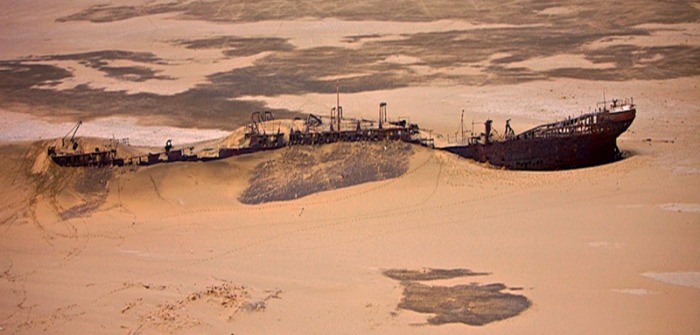
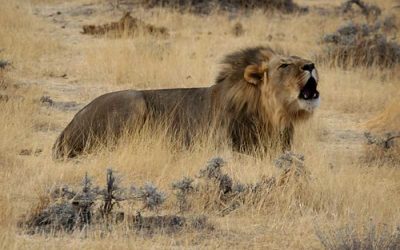
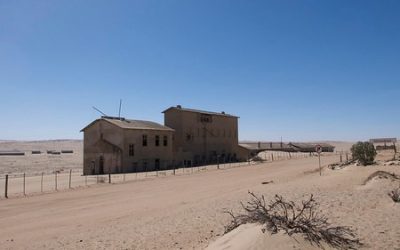
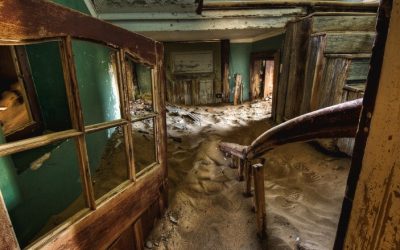
0 Comments